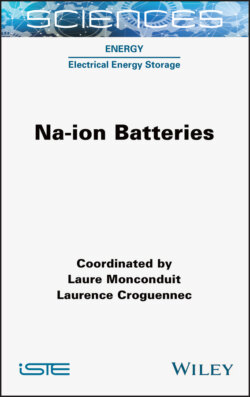Читать книгу Na-ion Batteries - Laure Monconduit - Страница 23
1.3. O3-type layered materials 1.3.1. NaMO2 (M = Sc, Ti, V, Cr, Mn, Fe, Co, Ni)
ОглавлениеO3-type layered sodium 3d transition metal oxides (including O’3-type ones) were discovered in 1930s–1975s (Goldsztaub 1935; Scholder and Kyri 1952; Dyer et al. 1954; Rüdorff and Becker 1954; Andersson and Wadsley 1962; Hoppe et al. 1965; Jansen and Hoppe 1972) and electrode performances of Ti, V, Cr, Mn, Co and Ni systems in Na cells were first reported by Delmas et al. in 1980–1985 (Braconnier et al. 1980; Braconnier et al. 1982; Delmas et al. 1982; Maazaz et al. 1983; Mendiboure et al. 1985). These oxides are electrochemically active and often evaluated with Na-metal half-cells consisting of the oxide as a positive electrode and metallic Na as a negative electrode for the primary tests. Since NaMO2 contains Na in the structure, Na-free electrode materials such as carbon are applied to the negative electrode for the practical Na-ion full cells. Charge/discharge tests of NaMO2 electrodes generally start in the Na-extraction way with simultaneous oxidation of transition metals in both the half-cell and full cell. In this section, electrochemical characteristics of the single 3d transition metal O3 and O’3 systems in Na cells are reviewed in order of increasing atomic number from Sc (3d0) to Ni (3d9).
